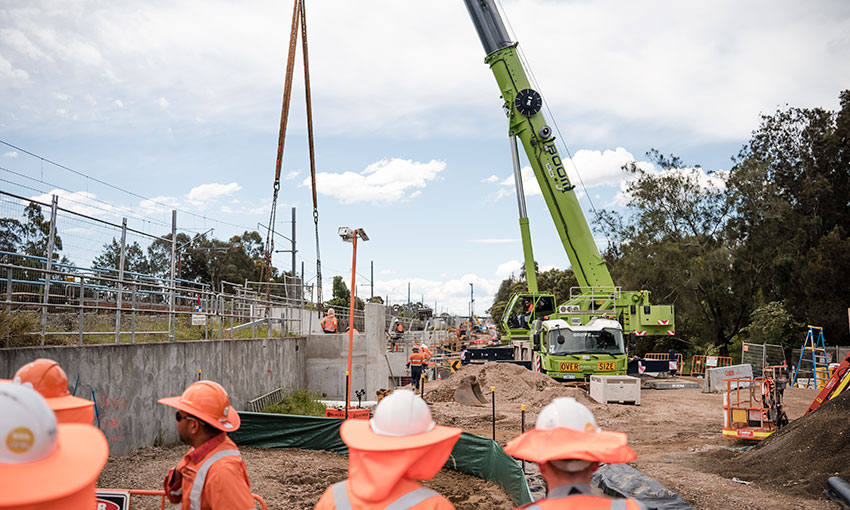THE AUSTRALIAN Rail Track Corporation has hit several milestones on its Port Botany Rail Line Duplication and the Cabramatta Loop projects.
For the Port Botany project, ARTC lifted four 15-metre bridge beams, weighing 45 tonnes each, for the new, 31-metre Mill Stream Bridge. The operation used a 750-tonne crane and nearly 300 cubic metres of concrete was used for the structure.
The Cabramatta Creek Bridge works, part of the Cabramatta Loop project, saw the installation of 48 bridge beams that are 14 metres long, and weigh up to 30 tonnes each.
The lifts were the first to be completed for the two major projects, with both bridges expected to be complete by early 2023.
The Australian government is fully funding ARTC to deliver the $400-million Port Botany Rail Line Duplication and Cabramatta Loop projects, which are intended to deliver better access to global export markets via Port Botany, improve freight supply chains across New South Wales and help ease local road congestion.
The two projects will help meet future demand where the freight task is predicted to increase by 77% by 2036.
The Botany Rail Duplication will duplicate the remaining 2.9-kilometre section of single line track to Port Botany, allowing freight to be moved more efficiently and effectively.
The Cabramatta Loop Project will increase rail freight capacity through metropolitan Sydney by allowing freight trains travelling in either direction to pass each other on the Southern Sydney Freight Line. The new 1.65-kilometre passing loop will allow for trains up to 1.3 kilometres in length.
ARTC group executive major construction projects Mike Zambelli said each extra freight train travelling on the Port Botany Rail Line will take up to 54 trucks off Sydney’s roads.
“We are pleased to announce the first bridges for the Port Botany Rail Duplication project and the Cabramatta Loop project have reached this milestone. Major construction works are on track with both projects expected to be complete in 2024,” he said.
“Not only will these transformational projects increase freight capacity, they will also encourage more freight movements to be made by rail – helping to shift freight away from road transport and reduce truck movements and associated traffic congestion.”





